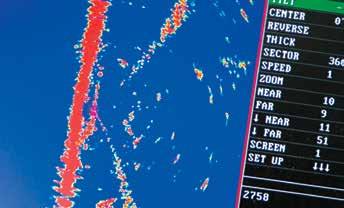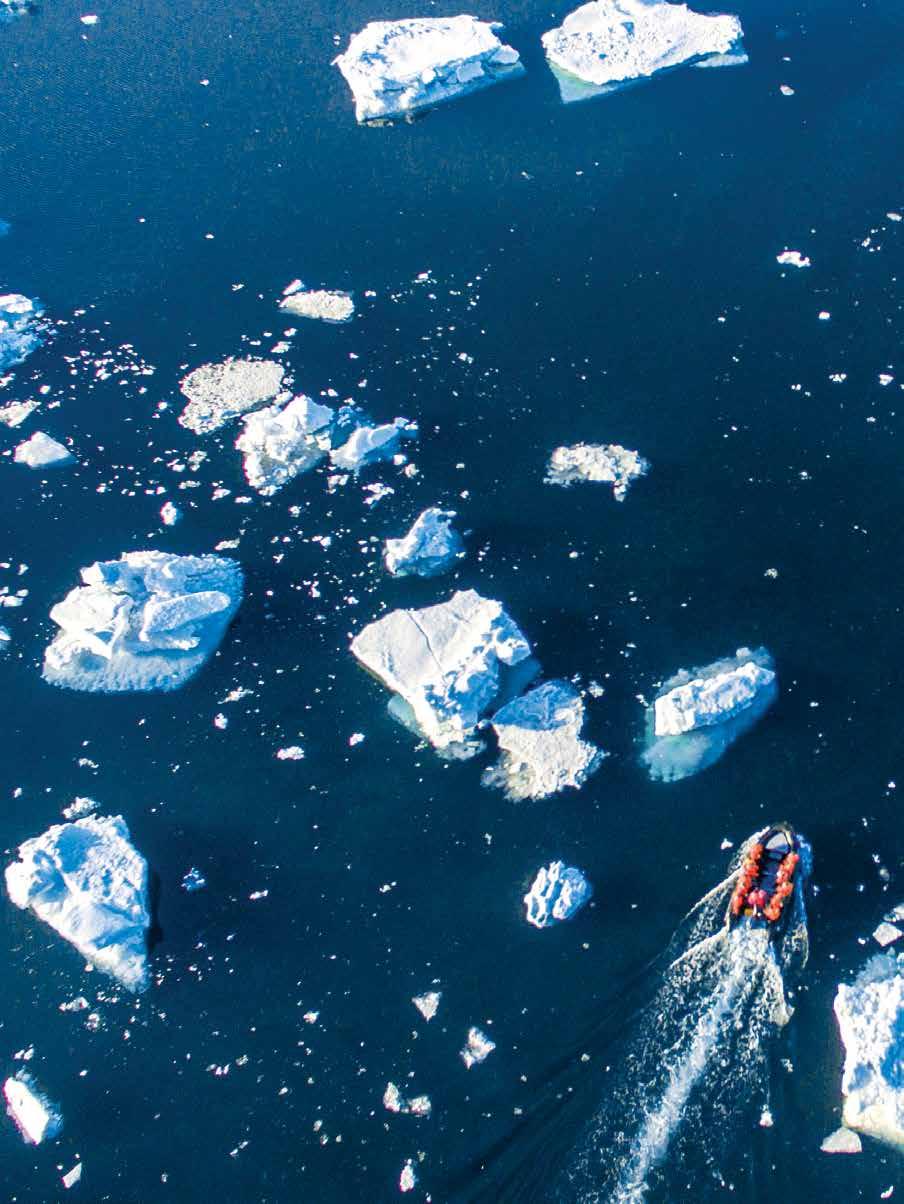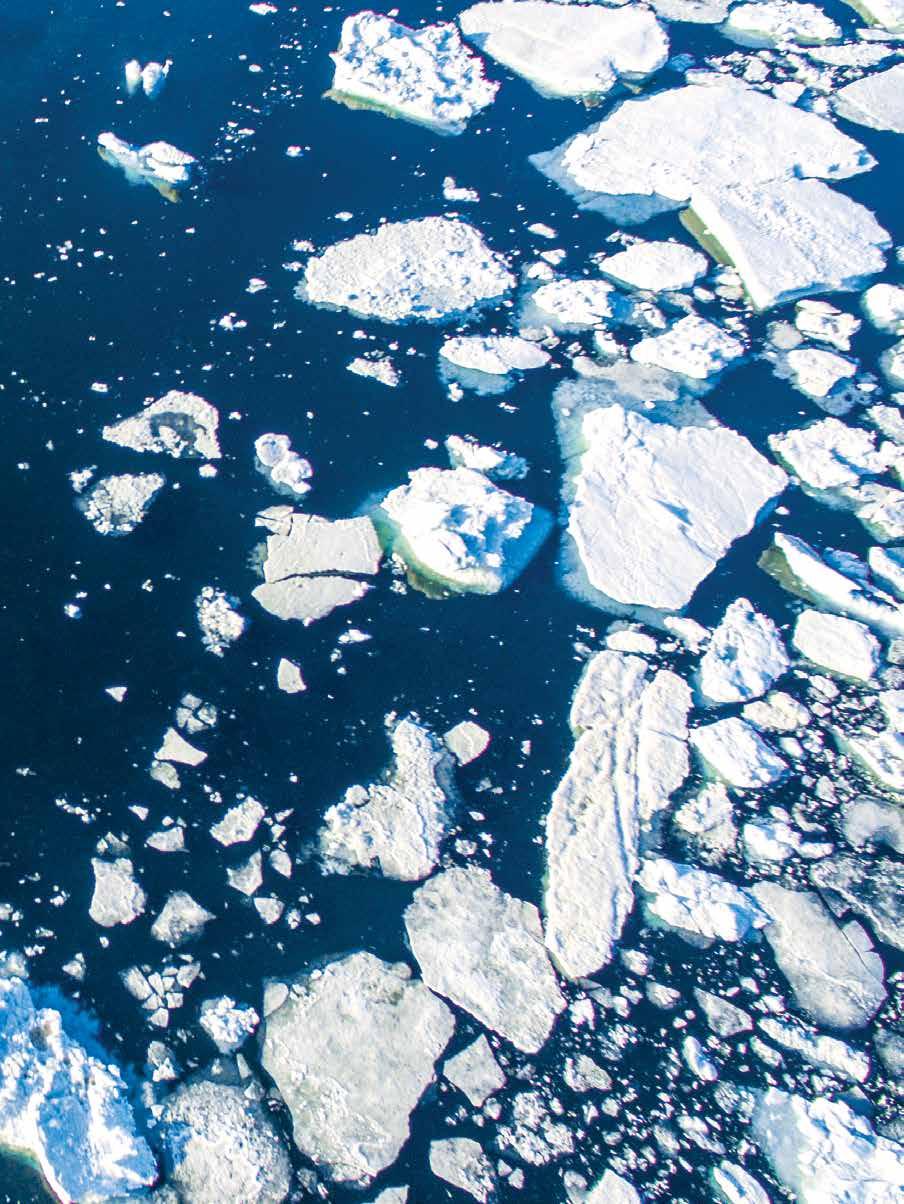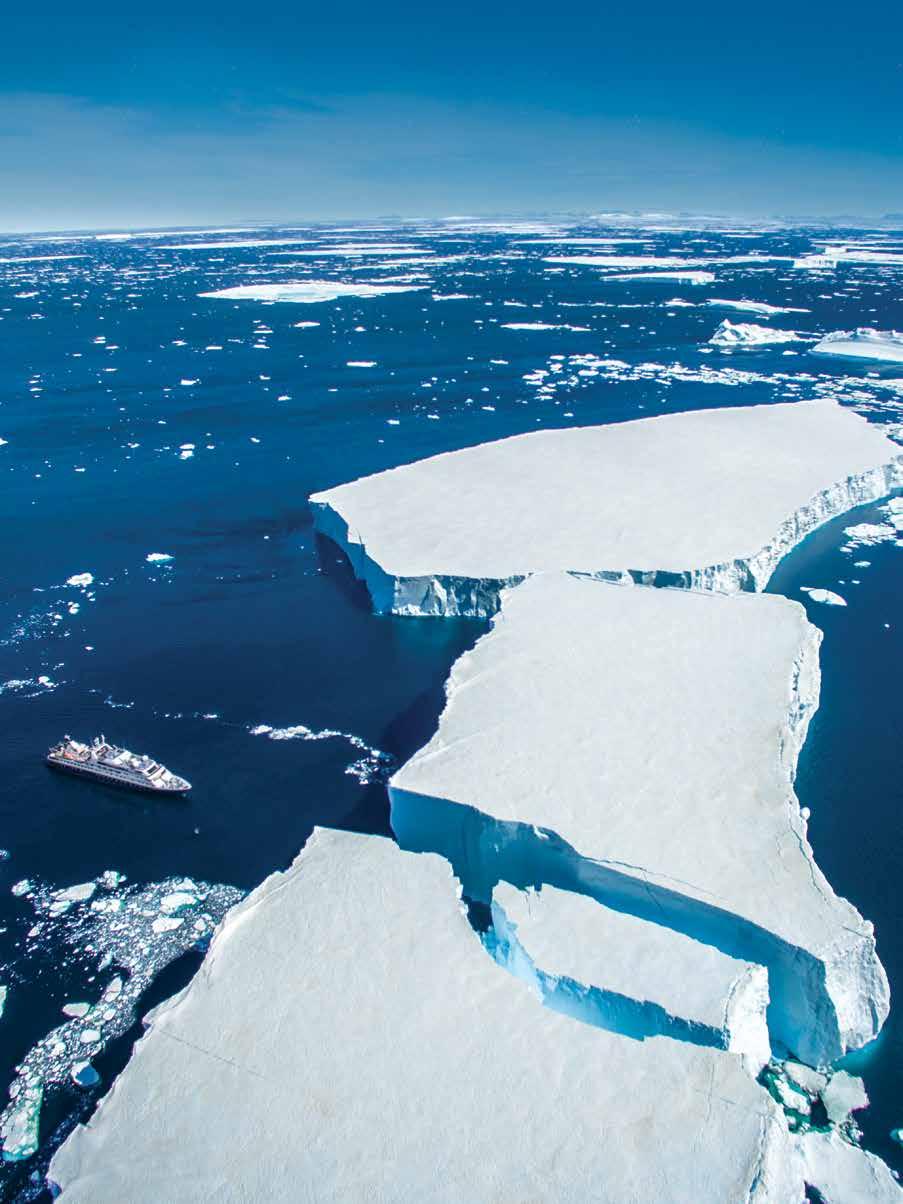
7 minute read
What SafetyFeatures Are Vital?
What Safety Features are Vital?
In addition to the inherent ice-worthiness and logistical operations of the ship, there are three important components to safety in Antarctica: Captain, staff and crew experience; on-board technology; and lifesaving protocol and equipment. A recent review of the available literature quoted some operators enthusiastically entering Antarctic tourism touting an “on-board physician” as a primary safety feature. While having a doctor aboard is undoubtedly important, there is far more to ensuring guest safety in Antarctica. Here are some of the baseline criteria to use in evaluating your travel provider.
Captain and Crew Experience
Captains who have attained the necessary experience navigating polar waters are called Icemasters. An Icemaster is not only familiar with the unique wind, weather and current dynamics in polar waters, he or she is also intimately familiar with all the forms of ice and the unique challenges each form presents.
The Captains of the Lindblad-National Geographic fleet have spent decades in the ice. Collectively, they have navigated over 500 Antarctic expeditions, ensuring that they have the crucial knowledge the company demands. And they are extraordinary mariners. For example, before Leif Skog, Lindblad V.P. Nautical and Master of the National Geographic Explorer, became a Captain in 1984, he worked as an officer on a variety of vessels including general cargo ships, LPG-gas tankers, a multi-purposed helium deepdiving support vessel and passenger ships carrying from 800 to 1,200 passengers. And, having earned his stripes as a mariner, he then devoted his next 35 years to Captaining in the much more challenging polar regions.
SKOG BAY (66.53° S, 66.28° W)

To recognize Captain Leif Skog’s ‘significant and sustained contribution in this field, the U.K. Antarctic Place-Names Committee recently approved the name Skog Bay. The name is part of a theme: Pioneers of safe and environmentally responsible Antarctic tourism.

Lifesaving Protocol and Equipment aboard the Lindblad-National Geographic Polar Fleet: Enclosed lifeboats (National Geographic Explorer pictured below) are a combination of a rigid fiberglass shell and a small plastic or heavyduty canvas door to protect all occupants from the elements in case of having to abandon ship. All lifeboats are equipped with Thermal Protective Aids (TPAs) for each person on board. TPAs provide a layer of protective insulation and are distributed to each person once the boat has been launched. All polar vessels are equipped with personal survival kits as well as comprehensive group survival kits for all aboard. Safety drills beyond standards set by SOLAS (Safety of Life at Sea) include weekly damage control and testing of damage control equipment drills. All polar ships in the Lindblad-National Geographic fleet employ a veteran polar crew, handpicked and trained to act without hesitation in any severe condition. Stand-by Zodiacs are ready at all times for immediate response. Physicians are on board each ship.
The Icemasters What Safety Features are Vital?

CAPTAIN LEIF SKOG
Lindblad V.P. Nautical, has been a member of IAATO since 1998 and served as Chairman of the IAATO Marine Committee for fifteen years, when he developed the safety and emergency procedures for all IAATO vessels. It ensures that all IAATO ships operating in the region keep in daily touch to form the initial response for any incident. This system was tested during a 2007 distressed vessel incident and resulted in several vessels, including National Geographic Endeavour, responding and arriving on the scene to help within a matter of hours.
CAPTAIN OLIVER KRUESS
has been working at sea for over three decades. He has been aboard expedition vessels since 1991, rising to command as a ship’s Master in 1995. For nearly 20 years, he has been navigating polar waters, crossing the Antarctic convergence about 140 times, and logging north of the Arctic Circle in the Atlantic and Pacific more than 60 times. In total he has joined nearly 450 expedition cruises worldwide, including 10 years of South Pacific expeditions. An extraordinary mariner, he also has exceptional naturalist skills. He can circle his ship in slow steady arcs to keep a pod of hunting killer whales in steady view, or sight a bear on the Arctic pack ice before the on-duty spotter, making his Bridge a constant hub for guests. Captain Kruess has also served as a representative at IAATO and most frequently captains National Geographic Explorer.
CAPTAIN HEIDI NORLING
is the first woman to captain a Lindblad Expeditions’ polar ship. She began sailing as a teen in the Stockholm archipelago. Working as a cadet aboard Swedish cargo ships, navigating from the Great Lakes and the North Sea to the Mexican Gulf, her career launched in earnest aboard the expedition yacht, Hanse Explorer where she conducted a series of adventurous seasons in Antarctic ice. Back in Visby, Sweden on a break, she spotted her dream ship, National Geographic Orion docked in the harbor. Mere months later she came aboard, and has since sailed National Geographic Orion to the South Pacific, Antarctica, Arctic, Alaska, and the Russian Far East.
CAPTAIN AARON WOOD
has been working at sea since graduating school, sailing cargo ships, oil vessels, and luxury ocean liners up to 2014, when he received an opportunity he couldn’t refuse— expedition cruising with Lindblad Expeditions. Since then, he has navigated his ships worldwide and through the Antarctic Circle and polar waters as Navigation Officer, Safety Officer, Staff Captain, and today, Captain. A certified advanced ice navigator, Captain Wood is now part of the new-build team for Lindblad Expeditions’ latest polar ice-class vessel, National Geographic Endurance.
CAPTAIN MARTIN GRASER
credits his 27 years of sea service to a long-standing passion for ice navigation and expedition travel, beginning in childhood sailing the North and Baltic Seas aboard his father’s hand-built boats. He began his career aboard the expedition yacht, Hanse Explorer, where he served from 2006 to 2015. Over the years, he has conducted many adventurous charters, including the 5-week National Geographic Pristine Seas expedition led by Dr. Enric Sala. Captaining National Geographic Orion since 2015, he is about to assume command of National Geographic Endurance, the most technologically advanced ice-class polar vessel in the world, taking the ship halfway around the world and deep into the polar ice.
What further qualifies Lindblad Icemasters is the company’s 50+ year heritage of record keeping. These Captains have soundings and coastal map records going back to 1966 and the pioneering days of Lindblad Travel. In addition, Lindblad Icemasters are not merely skilled maritime professionals, they have a profound love for the polar geographies, and are as adept as expedition naturalists at spotting wildlife. They dedicate their skills to ensuring that spontaneity remains Lindblad’s expedition hallmark. Their seasoned ships’ officers are also polar veterans, handpicked, well-trained and committed to optimizing the guest experience.

Cooperation & Coordination How Active Will Your Antarctica Experience Be?
All passenger ships plying Antarctic waters are equipped with a GMDSS (Global Maritime & Distress Safety System) emergency communication system and a satellite weather forecasting system. However, more technology is available that can be harnessed for greater travel safety. Knowing that the ship you’re traveling on contains the latest in predictive, navigational, and safety technology further assures your peace of mind and your well-being.

The chart below illustrates the wealth of advanced technology carried by Lindblad-National Geographic fleet ships.
KEY SAFETY FEATURES OF OUR POLAR SHIPS
POLAR CLASS SHIPS
FORWARD SCANNING SONAR To scan ahead to check for uncharted obstacles (rocks or submerged ice) and the safest way around
DOUBLE WEATHER FORECASTING Two independent weather forecasting companies to receive real-time satellite images
ICE RADAR Provides an adjustable, high def image using data, allowing Captains to choose the safest route through ice
ICE SEARCHLIGHTS Two ice searchlights aid the naked eye in picking up hazardous ice, both in daylight and total darkness
GMDSS (GLOBAL MARITIME & DISTRESS SAFETY SYSTEM) A comprehensive communication system, with multi Iridium satellite phones to completely cover polar waters and to act as a reliable backup system in any emergency
IAATO EMERGENCY RESPONSE SYSTEM Developed by Lindblad’s Captain Skog to ensure that all IAATO ships keep in daily touch to respond to any incident
DRONE FOR ICE NAVIGATION Facilitates ice navigation to find leads through the ice to open water near the ship
NATIONAL GEOGRAPHIC EXPLORER
NATIONAL GEOGRAPHIC ORION
NATIONAL GEOGRAPHIC ENDURANCE
NATIONAL GEOGRAPHIC RESOLUTION
The point of it all—experience, expertise, technology, and technique is this: To enable you to have the unparalleled thrill of heading into the unknown, armed with confidence in your leadership, to inhabit the vastness, and discover the wonder of being somewhere utterly new.










